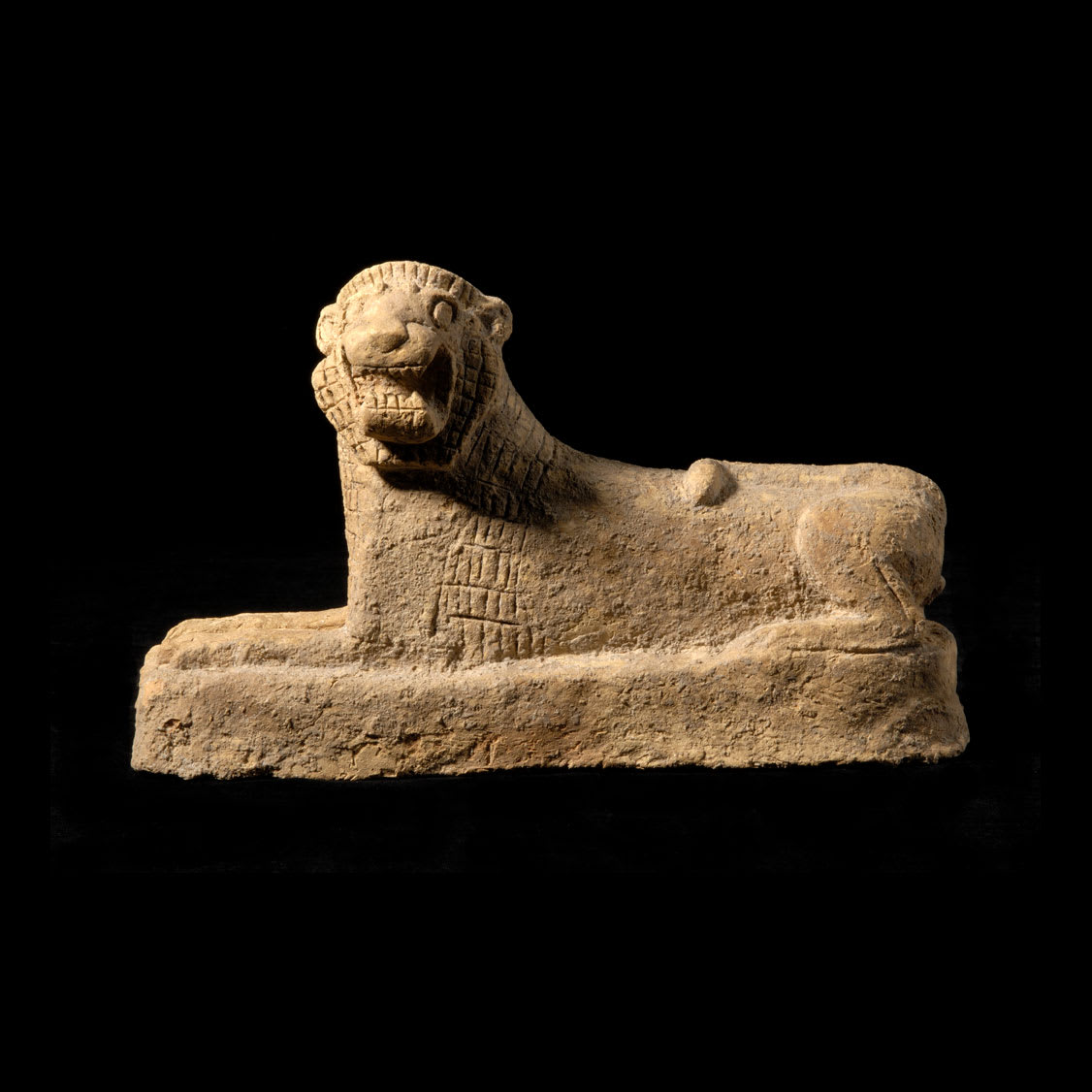Assyrian Terracotta Sculpture of a Recumbent Lion, 900 BCE - 700 BCE
Terracotta
15 x 24.1 cm
5 7/8 x 9 1/2 in
5 7/8 x 9 1/2 in
LO.874
Further images
Although archaeological excavations reveal that the land of the Assyrians had been inhabited as early as 5000 B.C., it was not until the reign of King Sargon of Akkad in...
Although archaeological excavations reveal that the land of the Assyrians had been inhabited as early as 5000 B.C., it was not until the reign of King Sargon of Akkad in 2371 B.C. that the Assyrians first rose to glory. Under Sargon, the kingdom rapidly expanded north to the city of Ashur and as far west as the Mediterranean, controlled by a central government based in Akkad. By 1813 B.C., King Shamshi-Adad I united the cities of Ashur, Nineveh, and Arbel into one cohesive administrative unit. These three cities, as well as Arrapkha and Kalhu (later known as Nimrud), form the historical core of the Assyrian Kingdom which would remain a credible force throughout the Mediterranean world for the next millennium. While various parts of Assyrian territory were annexed for brief periods of time by neighboring civilizations, this core remained firmly intact. The Assyrians experienced another Golden Age, lasting from the 9th until the 7th Century B.C. (this period is referred to as “Neo- Assyrian”). During this period, the kingdom grew to its largest extent, encompassing the lands from parts of modern Iran to the Mediterranean, from Anatolia to Egypt. However, it proved difficult even for the powerful Assyrian monarchs to maintain control over this vast territory for very long. By the end of the 7th Century, the Assyrian Kingdom began to collapse under the weight of assaults from the Babylonians to the south and the newly founded Medes Kingdom to the east. In 612 B.C., Nimrud burned for the second time in three years, followed by the sacking of Ashur and Nineveh, effectively ending Assyrian control of the ancient Near East.





